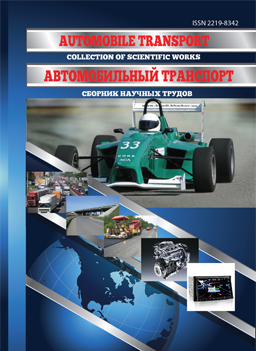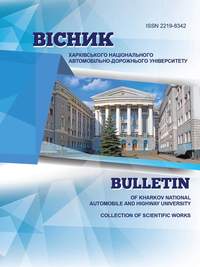Efficiency of energy-generating tiles with different types of multipliers
DOI:
https://doi.org/10.30977/VEIT.2024.25.0.5Keywords:
energy-generating tiles, multipliers, helical gears, spur gears, generation, alternative energy sourcesAbstract
Problem. With the urgent need for sustainable and renewable energy solutions, the integration of energy-harvesting technologies in urban infrastructure has become a focal point of innovation. Energy-generating tiles, transforming pedestrian movement into electricity, offer a viable path forward. Yet, their efficiency hinges on the internal design, particularly the type of multipliers used. Goal. This study aims to assess and compare the efficiency of energy-generating tiles equipped with helical and straight-cut gear multipliers, to identify the optimal design for maximizing energy conversion in urban environments. Methodology. An experimental setup was created to test prototypes of the energy-generating tiles under controlled foot traffic conditions. The study measured and analyzed the electrical output and efficiency of tiles with both types of gear multipliers, simulating real pedestrian traffic scenarios. Results. Energy-generating tiles featuring straight-cut gears outperformed those with helical gears in energy output and conversion efficiency. The research also illuminated the influence of pedestrian dynamics, like step force and frequency, on tile performance. Originality. This research advances renewable energy technology by offering a comprehensive analysis of energy-generating tile efficiency with different gear multipliers. It introduces an innovative method for evaluating tile performance, underscoring the significance of gear design in energy conversion.
Practical value. The findings have considerable implications for sustainable urban development, suggesting that implementing energy-generating tiles in areas with high foot traffic could significantly enhance urban renewable energy sources. This study not only guides the design of more efficient energy-harvesting tiles but also encourages their broader adoption, supporting urban sustainability goals and the reduction of carbon emissions.
References
Arhun, S., Borodenko, Y., Hnatov, A., Popova, A., Hnatova, H., Kunicina, N., Ziravecka, A., Zabasta, A., & Ribickis, L. (2020). Choice of Pa-rameters for the Electrodrive Diagnostic System of Hybrid Vehicle Traction. Latvian Journal of Physics and Technical Sciences, 57(4), 3–11. https://doi.org/10.2478/lpts-2020-0017
Van Mierlo, J., Maggetto, G., & Lataire, P. (2006). Which energy source for road transport in the future? A comparison of battery, hybrid and fuel cell vehicles. Energy Conversion and Management, 47(17), 2748–2760.
Arhun, S., Hnatov, A., Hnatova, H., Patlins, A., & Kunicina, N. (2020). Problems that have arisen in universities in connection with COVID-19 on the example of the Double Degree Master’s Pro-gram “Electric Vehicles and Energy-Saving Technologies.” 1–6. https://doi.org/10.1109/RTUCON51174.2020.9316601
Galkin, A., Obolentseva, L., Balandina, I., Kush, E., Karpenko, V., & Bajdor, P. (2019). Last-mile delivery for consumer driven logistics. Transpor-tation Research Procedia, 39, 74–83.
Patlins, A., Hnatov, A., Arhun, S. C., Bogdan, D., & Dzyubenko, O. (2019). Development of an en-ergy generating platform for converting kinetic energy into electrical energy using the kinematic synthesis of a three-stage multiplier. Transport Means 2019: Proceedings of the 23rd Interna-tional Scientific Conference, 2019-Octob, 403–408.
Jintanawan, T., Phanomchoeng, G., Suwankawin, S., Kreepoke, P., Chetchatree, P., & U-viengchai, C. (2020). Design of kinetic-energy harvesting floors. Energies, 13(20), 5419.
Moussa, R. R. (2020). Installing piezoelectric tiles in children outdoor playing areas to create clean & healthy environment; case study of el-shams sporting club, Cairo_Egypt.
Ismail, N. I. N., Abd Rahman, N. A., Yaccob, A. A., Muhamad, N. S., & Jamaludin, S. U. (2020). Feasibility study on potential of pedestrians’ footstep based energy harvesting (case study: UiTM Pulau Pinang). IOP Conference Series: Materials Science and Engineering, 849(1), 012056.
Solban, M. M., & Moussa, R. R. (2019). Piezoe-lectric Tiles Is a Sustainable Approach for De-signing Interior Spaces and Creating Self-Sustain Projects. IOP Conference Series: Earth and En-vironmental Science, 397(1), 012020.
Akib, T. B. A., Mehedi, H., & Nazmuschayadat, M. (2019). Electrical energy harvesting from the foot stress on foot overbridge using piezoelectric tile. 2019 1st International Conference on Ad-vances in Science, Engineering and Robotics Technology (ICASERT), 1–5.
Moussa, R., & Solban, M. (2021). Investigating the potential of using human movements in ener-gy harvesting by installing piezoelectric tiles in Egyptian public facilities. Journal of Engineer-ing Research, 9(4A).
Puteri Aisyah, M. S. (2022). Piezoelectric energy floor tiles performance and effectiveness as building energy conservation measures for dif-ferent types of buildings in Malaysia. UTAR.
Ruman, M. R., Das, M., & Mahmud, S. I. (2019). Human footsteps for energy generation by using piezoelectric tiles. 2019 Innovations in Power and Advanced Computing Technologies (i-PACT), 1, 1–6.
These high-tech tiles generate energy from our footsteps—And they could change how we power our cities. (2023, October 6). Yahoo News. https://news.yahoo.com/high-tech-tiles-generate-energy-161737905.html
Hawkins, J. (2022, July 13). This company creat-ed floor tiles that convert footsteps into energy. BGR. https://bgr.com/science/this-company-created-floor-tiles-that-convert-footsteps-into-energy/
Hnatov, A., Patlins, A., Arhun, S., Kunicina, N., Hnatova, H., Ulianets, O., & Romanovs, A. (2020). Development of an unified energy-efficient system for urban transport. 2020 6th IEEE International Energy Conference (ENER-GYCon), 248–253. https://doi.org/10.1109/ENERGYCon48941.2020.9236606
Patlins, A., Hnatov, A., & Arhun, S. (2018). Us-ing of green energy from sustainable pavement plates for lighting bikeways. 2018-Octob-3–5, 574–579. https://ortus.rtu.lv/science/en/publications/27845
Patil, S., Parsewar, S., Pranav, B., Aade, S., & Hanmante, S. (2019). Energy generation and im-plementation of power floor (pavegen). Energy, 6(04).
Mustafa, S. F. (2021). Applying Piezoelectric Tiles as a Sustainable Design Solution to Reduce Energy Consumption in Egypt. International Journal of Environmental Sustainability, 17(2).
Patlins, A., Hnatov, A., Arhun, S., & Dzyubenko, O. (2019). Design and research of constructive features of paving slabs for power generation by pedestrians. Transportation Research Procedia, 40, 434–441. https://doi.org/10.1016/j.trpro.2019.07.063
Downloads
Published
How to Cite
Issue
Section
License
Copyright (c) 2024 Щасяна Аргун, Андрій Гнатов, Павло Сохін

This work is licensed under a Creative Commons Attribution 4.0 International License.
Автори, які публікуються у цьому журналі, погоджуються з наступними умовами:
1. Автори залишають за собою право на авторство своєї роботи та передають журналу право першої публікації цієї роботи на умовах ліцензії Creative Commons Attribution License, котра дозволяє іншим особам вільно розповсюджувати опубліковану роботу з обов'язковим посиланням на авторів оригінальної роботи та першу публікацію роботи у цьому журналі.
2. Автори мають право укладати самостійні додаткові угоди щодо неексклюзивного розповсюдження роботи у тому вигляді, в якому вона була опублікована цим журналом (наприклад, розміщувати роботу в електронному сховищі установи або публікувати у складі монографії), за умови збереження посилання на першу публікацію роботи у цьому журналі.
3. Політика журналу дозволяє і заохочує розміщення авторами в мережі Інтернет (наприклад, у сховищах установ або на особистих веб-сайтах) рукопису роботи, як до подання цього рукопису до редакції, так і під час його редакційного опрацювання, оскільки це сприяє виникненню продуктивної наукової дискусії та позитивно позначається на оперативності та динаміці цитування опублікованої роботи.








